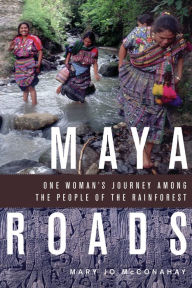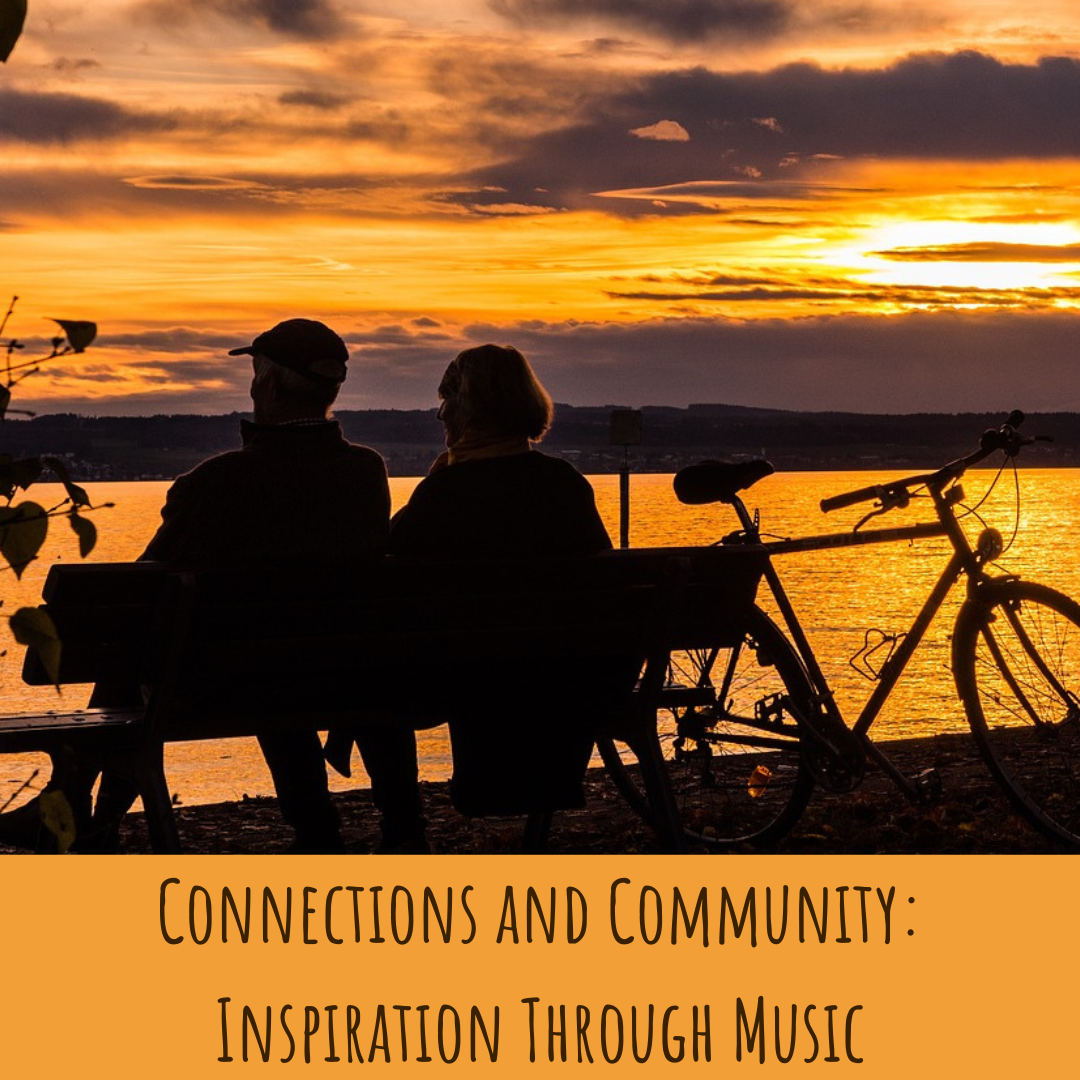Maya Roads
The rainforest often seems like it is another world - full of animals, plants, and cultures that are unfamiliar to us. Yet something about this area draws us to learn more about it. I've recently read an extraordinary book that documents one journalist's many years among the people of Central America, in the cradle of the Maya civilization.
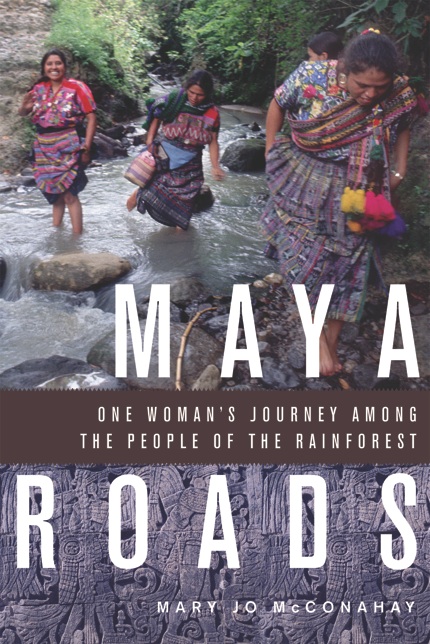
The author, Mary Jo McConahay, has thirty years of experience in this geographic area, and it is well-documented in her book, Maya Roads: One Woman's Journey Among the People of the Rainforest. A journalist that has covered Guatemala and Central America for over 30 magazines and periodicals, McConahay's worldview is full of sensitivity and cultural understanding. McConahay provides a window into traditional cultures, the changes that have been happening in the rainforest because of deforestation, personal stories of familial changes, tradition and who upholds it now, violence and rebellions, rich cultural traditions, and always, an intense fascination of history, culture, people, archaeology, and place.
Tikal Jaguar Temple
This is one book that I could not put down, that addressed all of the things I am personally passionate about - but in a new location to me. And I admit - she's got me hooked. I'm now reading more about Central America, planning a trip there in the next few years, and discovering cultural treasures - all thanks to this book. It's that good. Her writing is compelling and honest; her portrayal of life in Central America is at once a deep visualization and a honest and firsthand assessement of cultural change.
We were lucky enough to catch up with Mary Jo McConahay and talk about her book, inspiration, cultural changes, making a difference, cultural survival and change, and more. Here's what she had to say...
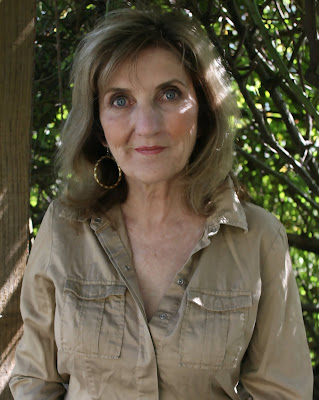
WE: Please tell us about your new book, Maya Roads...
MJM: Maya Roads is a portrait drawn over thirty-years of the people and places of the Central American rainforest, from southern Mexico -- Chiapas -- through Guatemala's northern region called Peten. Based on my travels as a journalist and as someone who loves the rainforest, Roads is a journey through time and space that takes the reader into the culture, past and present, of the Maya people and their wild, enchanting, but fragile geography.
WE: What inspired you to write this book?
MJM: A reporter writes the "first draft of history" in dispatches of 800 words or less. As I saw the dramatic experiences of the rainforest's inhabitants over the decades, from invasions of timber barons to archaeological discovery to political revolution, I knew only a book could tell the story. I have had a love affair with the region since I first visited on a whim as a young woman, a story that might never be told any other way.
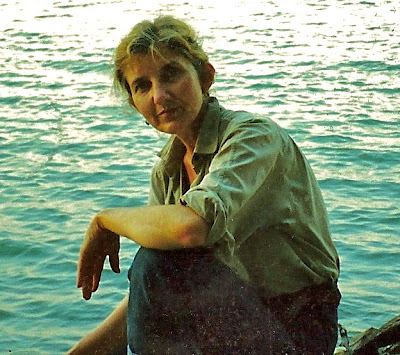
WE: What have been the most significant cultural changes in this geographic area, in the 30 years you've been living in and learning about the culture?
MJM: Roads, revolution and language are three. Those who inhabit the Maya rainforest today are more connected to other parts of the world than they could be only short decades ago, for better and for worse. Where roads hardly existed there are many now, allowing locals to transport goods, perhaps to get medical care more quickly. However the roads also bring in legal and illegal logging, and desperate peasants from elsewhere, and the rainforest falls. The Zapatista insurrection of 1994 and its aftermath has inspired Maya and other indigenous to demand a dignified response to their needs, and provided new health and education in "autonomous" Chiapas towns. There are some twenty-nine Maya languages all together, but those in the rainforest, holding treasures of environmental, medical and spiritual information, have fewer true speakers every day.
Palenque
WE: How can travelers make a difference in and learn more about this area?
MJM: Thoughtful tourism is one way to help the local economy, from adventure tourism like white water rafting on the Usumacinta, the Grandfather of Central American Rivers, to package and individual tourism at the beautiful ancient Maya sites like Tikal, Palenque and Bonampak. Maya Roads is a book for those who practice what I call "deep travel," that is, who read some recent history before going to a place, and perhaps memorize a list of at least thirty words or so to begin a "conversation." That way we know something of what local people are carrying around in their heads, making us more receptive to a wider experience, and perhaps able to leave a little of ourselves behind. For starters, there is "A Reading List" page on the Maya Roads website: http://www.mayaroads.com/mayaroads.com/Welcome.html
WE: Do you have advice for avoiding troubled locations or situations?
MJM: I wish I did -- whether in Paris, New Delhi, or the Maya rainforest! Well-travelled places in Chiapas and Peten, such as the stunning colonial city of San Cristobal and the classic Maya sites are as popular as ever. Those with concerns might opt for a group tour, of which there are many with experienced companies, including with an educational agenda. Incidents of violence on drug traffic routes, which will not disappear until the United States decriminalizes the giant U.S. market, have erupted in off-the-beaten path places, where tourists are unlikely to go.
WE: Do you feel optimistic about how these people and cultures will survive and maintain their strong cultural traditions?
MJM: Most definitely. Maya have recovered the population numbers they had at the conquest, after centuries of devastation by new disease, violent oppression and in this century, social marginilization. The small but increasing number who achieve higher education insist on their Maya origins. Today Maya celebrate ceremony and other aspects of their cosmovision openly, which was much less the case thirty years ago. A pan-Maya identity movement, often of young people, seeks political space in Guatemala. Of eight million Maya, fifteen percent are in the United States, and another large percentage in a Mexican diaspora, working to send money to families; often Maya-centered organizations reach out to these "economically displaced," reinforcing Maya culture even away from the homeland.
WE: Thanks so much. Mary Jo. Your book is a fascinating read, one that introduces the reader to cultures, people, and placs that will forever leave their marks on our hearts. We highly recommend Maya Roads to our Wandering Educators.
For more information, please see:
Click here to purchase it from Barnes & Noble:
All photos courtesy and copyright Mary Jo McConahay.
Note: We received a review copy from the author and publisher. Thank you!
-

- Log in to post comments


